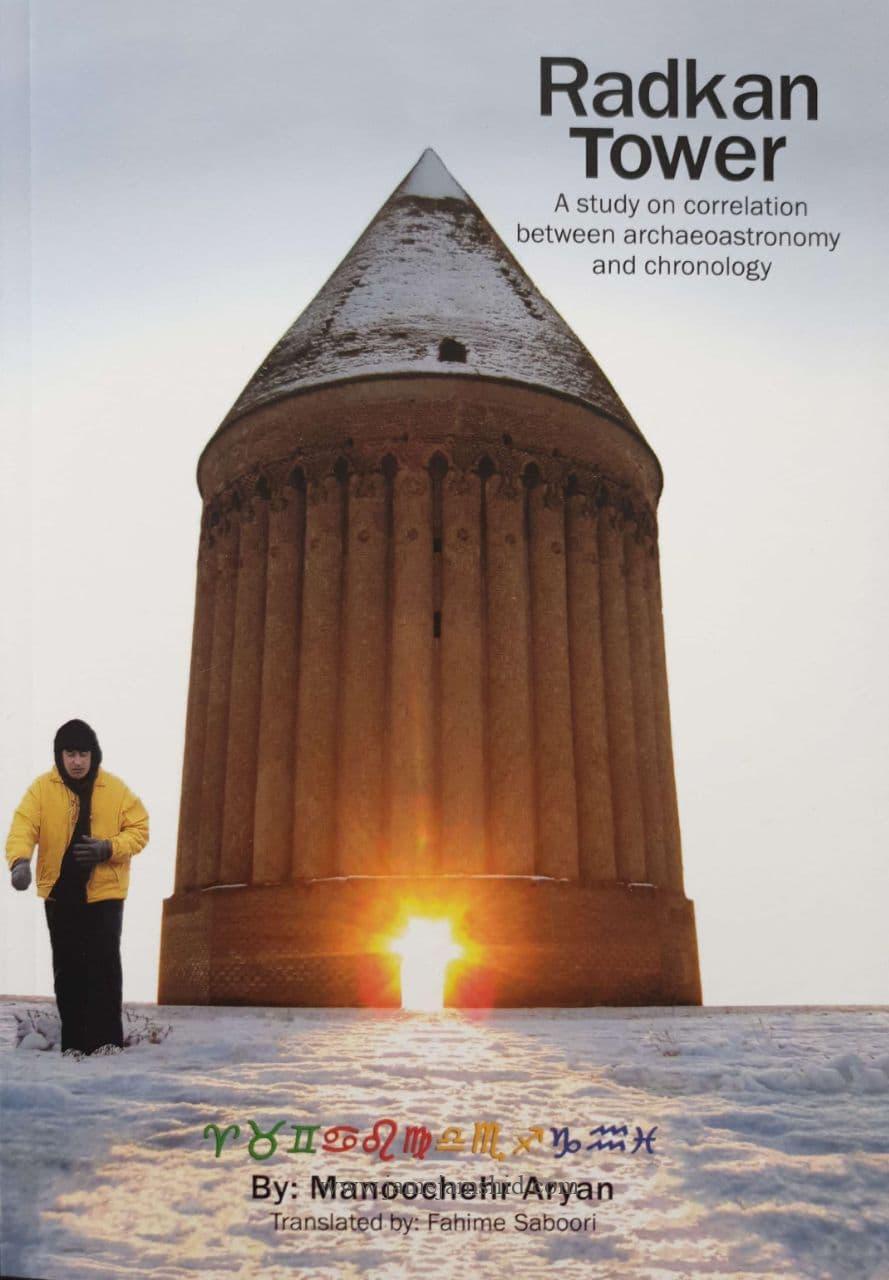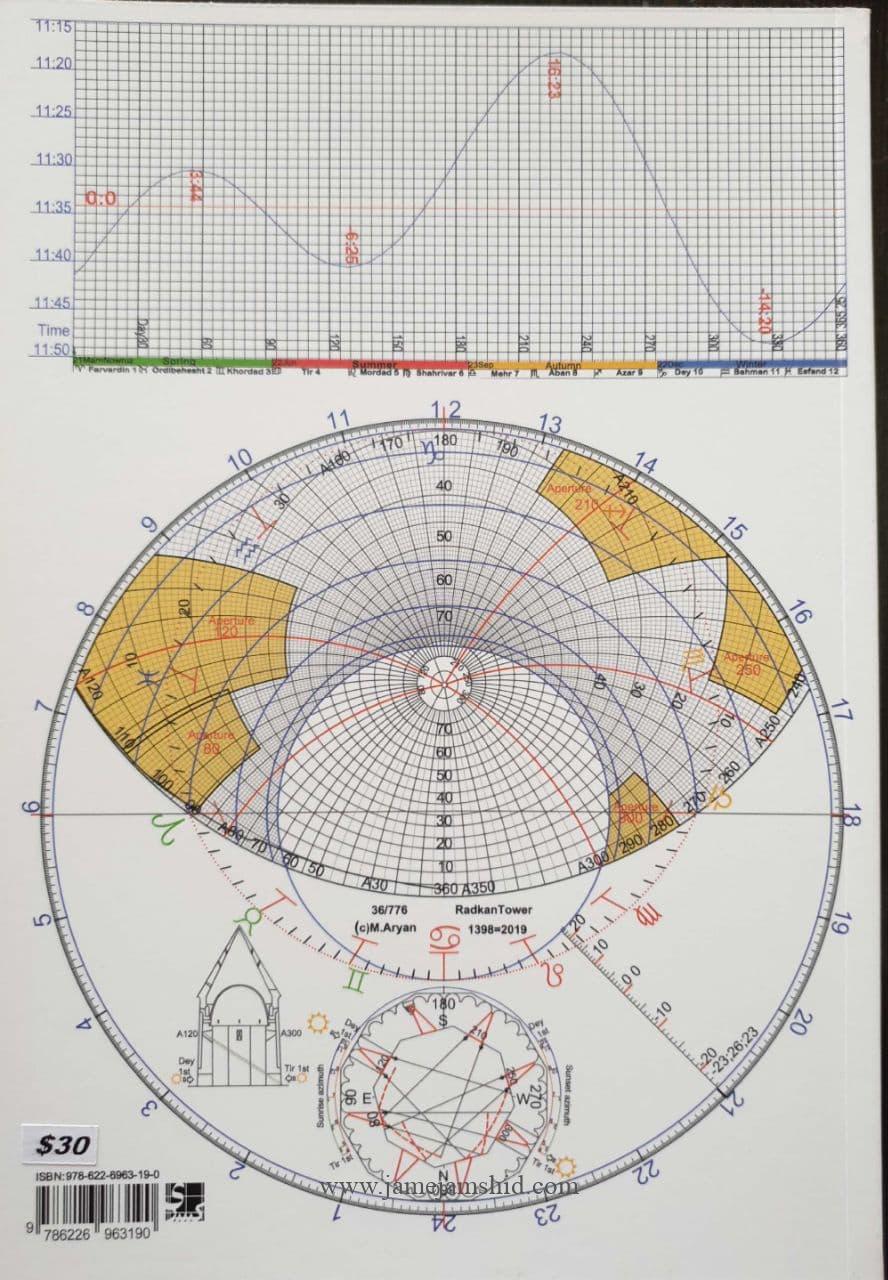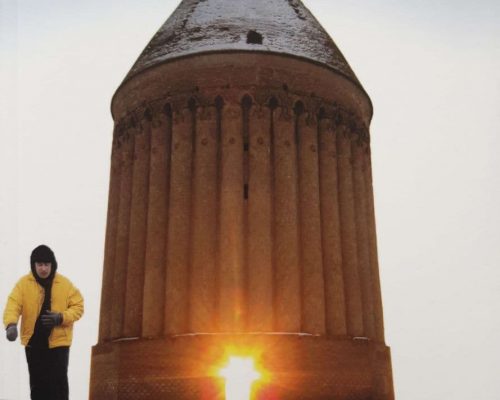
هیچ برجی به برج رادکان نمی رسد
جولای 18, 2020
مهر پارسه
نوامبر 24, 2020The result of his efforts is the publication of his two books Negahi digar be borjha (Another look into the towers) and Borje Radkan (Radkan Tower) in Persian. The new edition of the latter was translated into English so as to grant the world’s researchers access to the results of this novel research and to serve them in studying and restoring similar structures.
Radkan
Tower
A study on correlation
between archaeoastronomy
and chronology
By: Manoochehr Aryan
Translation by: Fahime Saboori


Preface ........................................................................................................ 1
Chapter 1 ............................................................................................. 5
Review of literature on Radkan Tower ........................................................................ 5
Examination of Hafez Abru’s statement ...................................................................... 8
Radak Tower or Radkan Tower ...................................................................................11
Examination of Khaje Nasir had a tower or built a tower there in Hafez Abru’s
statement and the construction date .........................................................................12
The word Borj [tower/zodiac month] .........................................................................14
Date converter ruler ...................................................................................................16
Chapter 2 ............................................................................................17
Application of Khaje Nasir’s astronomical ideas in the construction of the tower .... 17
Azimuths of the walls ................................................................................................. 22
Azimuths of the pilasters ........................................................................................... 23
Chapter 3 ........................................................................................... 27
The theory for the computation of the altitude of the sun and celestial bodies in
Radkan Tower ............................................................................................................ 27
Why does Radkan Tower have two doors? What is the astronomical point? ........... 32
Employment of apertures in old chronology ............................................................. 36
Jamshid Kashani’s aperture of the afternoon prayer ................................................ 38
Examination of the term twelve apertures in Hafez Abru’s statement and in Radkan
Tower ........................................................................................................................ 39
The engineering of the construction of the apertures of Radkan Tower ................. 41
Chapter 4 .......................................................................................... 43
Naming the walls and apertures ............................................................................... 43
Finding Nowruz by observing sunlight from Aperture 120 ....................................... 46
The method for the daily observation and recording of apertures sunlight ............ 48
The method of photography and marking the apertures sunlight ........................... 50
Comparing the apertures in Radkan Tower with the aperture in the Fakhri sextant.51
Comparing the aperture sunlight in the sextant and in Radkan Tower .................... 55
Why does Radkan Tower have twelve apertures? ................................................... 62
Examination of Aperture 80 ............................................................................... 62
Ruler for parallel days ........................................................................................ 68
Findings of more than 80 days of field research and observation of aperture
sunlight .............................................................................................................. 69
Records of Aperture 80 ...................................................................................... 69
Records of Apertures 120 .................................................................................. 71
Records of Apertures 210 and 250 .................................................................... 71
Records of Apertures 300 .................................................................................. 71
Aperture sunlight on parallel calendar days ...................................................... 78
An account of the markings in the tower .......................................................... 79
The method of marking on a fixed board .......................................................... 81
Hardships in making the records ....................................................................... 82
Chapter 5 ......................................................................................... 85
The method for the computation of the advent and end time of aperture
sunlight, its path, azimuth, altitude, and the location of the sun in the sky
throughout the year by means of an astrolabe ................................................ 85
Examination of the existing errors in Radkan Tower ........................................ 92
Preface
Since the world’s ancient monuments belong to all the people in the world, and the knowledge and reflection employed in these monuments, existing as far back as the progress era of the primitive man, have been passed down to us, the book Radkan Tower was translated so as to be accessible to all. It is hoped that this book, which is the result of 20 years of constant library research and fieldwork aimed at glorifying the astonishing craftsmanship of the tower’s builders and also serving Iranians as well as people all over the world, pave the way for fellow researchers to explore the functions of apertures in other ancient monuments in Iran and across the world.
The Radkan Tower, whose construction dates back to over 750 years ago, is located at 3 kilometers east of the Radkan village, in Tus region, at 78 kilometers west of Mashhad, Iran. This elegant 26-meter brick tower is erected on dodecagon walls mounted by 36 pilasters. The individual pilasters are joined with miniature trefoil arches at the top, above which is a partially ruined frieze of Kufic inscriptions. The tower is crowned by a conical roof covering the collapsed hemispherical internal dome. The interior is enclosed by octagonal walls. A spiraling staircase encased within the monument's walls gives access to the inner dome, of which only the base remains. The tower has two doors facing southeast and northwest, and a number of apertures in different sizes in the walls and on the roof. There are beautiful ecolodges and peaceful resorts in the Radkan village to accommodate researchers and visitors.
As an attachment to the book Negahi Digar Be Borjha [Another Look into the Towers], this research study deals with a further investigation of the Radkan Tower. Many researchers including Sani od-Dowleh, Max van Berchem, Ernst Emil Herzfeld, Donald Newton Wilber, and Sheila Blair have made contradictory comments on the Radkan Tower in their writings without citing any sources and referring to ancient texts. After probing into these comments, this study makes a word for word examination of Hafez Abru ’s statement, “Radak Village, whereat had Khaje Nasir a tower with twelve apertures; [light] at the beginning of each month thro one entered.” It then proceeds to find out the archeological structure or tower whose architecture is compatible with this statement.
Next, relying on Khaje Nasir’s written viewpoint in Zij-e Ilkhani , a comparison is made between the astronomical observations of the aperture of the Fakhri sextant in an old observatory in Maraghe and the apertures of the Radkan Tower. After examining the observations of the sunlight of the tower’s apertures and exploring the possibility of a method for daily chronology through the apertures, the present study proves that the Radkan Tower is, based on Hafez Abru’s statement, the masterpiece of Khaje Nasir.
The study then goes on to give an account of the field work involving the observations of the sunlight patches entering the apertures and falling on the interior walls of the Radkan Tower throughout all months of the year and also marking those patches on the wall. The results of this field work are th
en presented in the corresponding tables. This endeavor was made with the aim of revealing the unique method of observation and daily chronology of the Radkan Tower and putting it at disposal of researchers and every day visitors of the tower. To benefit from the readers’ feedbacks and to provide assistance with their further inquiries, the following website and email address are available for the readers.
www. jamejamshid.com
The photography, surveying, computations, records, illustrations, tables, devised astrolabe, and the whole research have been conducted by the researcher of this book. Also, all costs of transportation, research, publication, and translation have been personally paid. The movies, tables, and color photographs with high quality can be found at the website. The translation of this book was conducted by Dr. Fahime Saboori with her great concern and precision.
There is a date converter ruler included in this book for converting and finding the equivalent days in the Iranian and Gregorian calendars. Also, on the back cover you can see an astrolabe for computing the time when the sunlight enters the apertures throughout the year. The method of this computation is thoroughly explained in the book.
علت عاشق ز علتها جداست
Incentive for the lover is different from all other
(Molana Balkhi)

